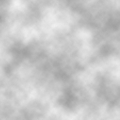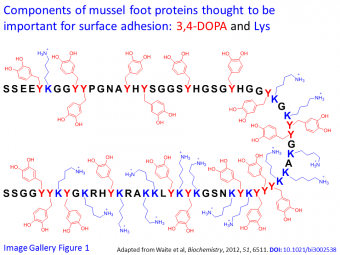Bio-Inspired Wet Adhesion
We are focusing on wet adhesive properties of siderophores and siderophore analogs. Wet adhesion is an engineering challenge that has been solved by many marine animals including the mussel. However, new wet adhesive materials fall far short of their natural archetypes. Our focus is to investigate mechanistic features which are thought to be important in interfacial mussel foot protein adhesion (Image Gallery Figure 1) in small molecule adhesive compounds.
A siderophore structure (Image Gallery Figure 2) is simple in relation to mussel foot proteins and the interpretation of the physical forces that underpin siderophore analog adhesion is relatively straightforward by comparison. By synthetically modifying the structure and organization of amino acids and their side chains within the siderophore analogs, we are able to determine which components and which configurations yield optimal adhesive properties. The results of this work will ultimately be used to guide the design of larger polymer based synthetic wet adhesives. We are specifically focused on catechol and lysine due to their high mole percent in naturally occurring adhesive proteins, as well as the use of hydrophobic amino acids due to their potential to displace adsorbed water layers that may otherwise prevent adhesion.








